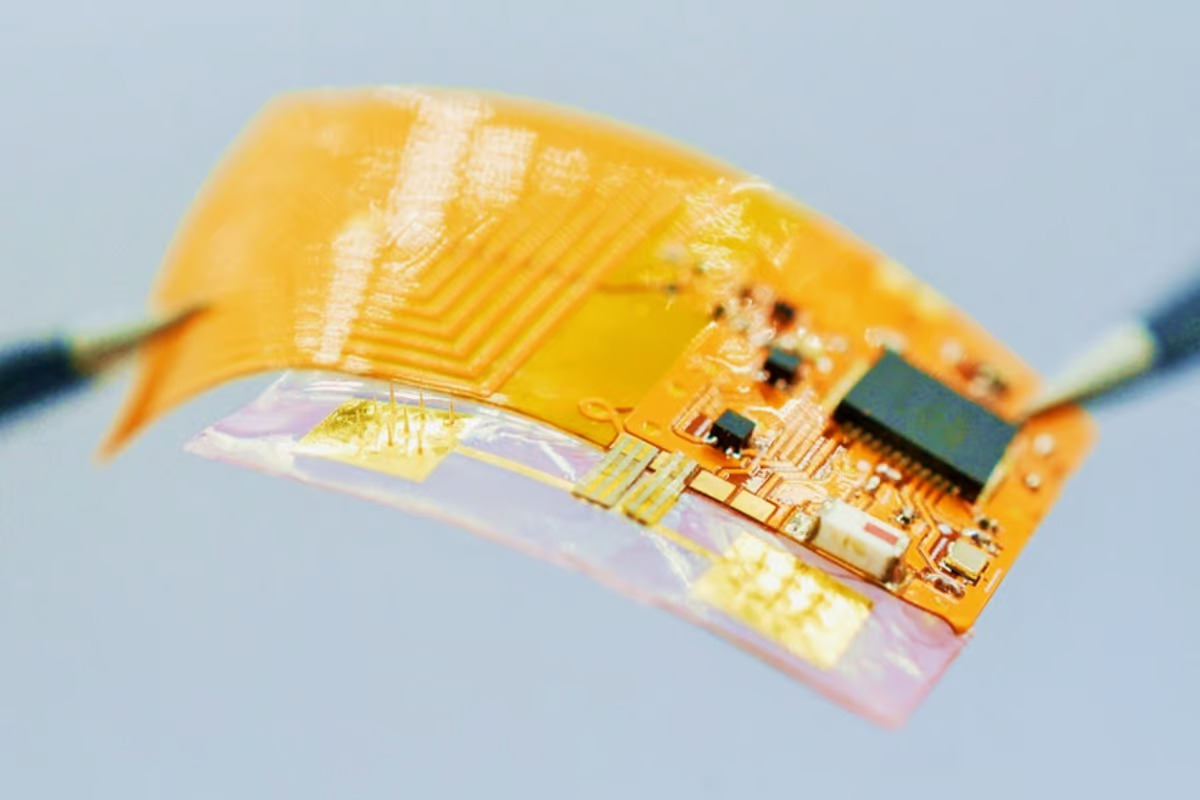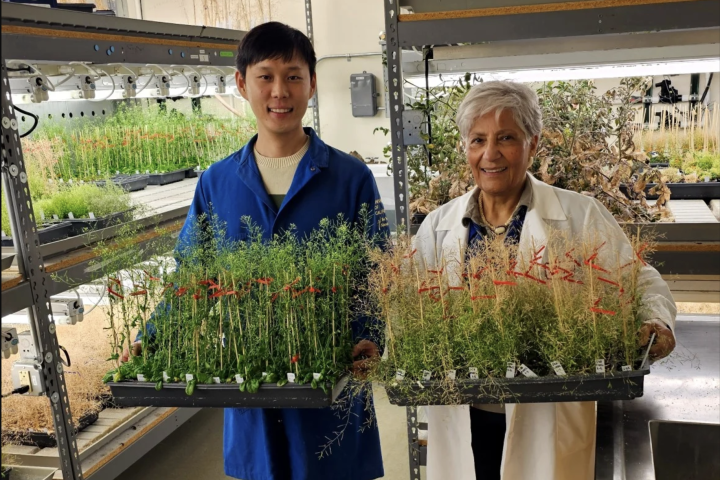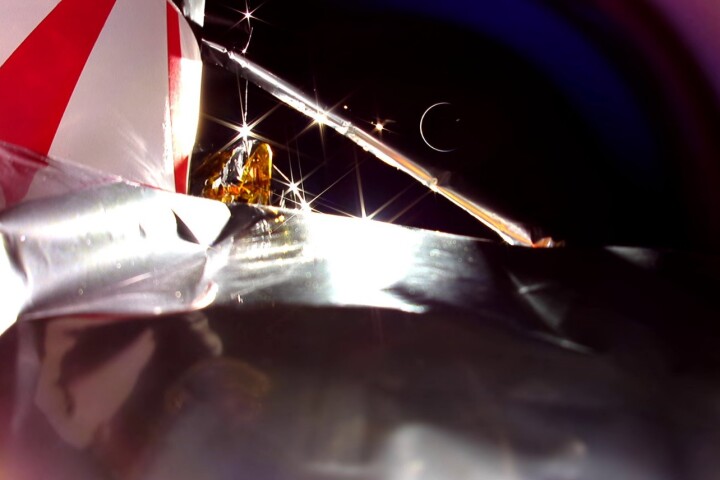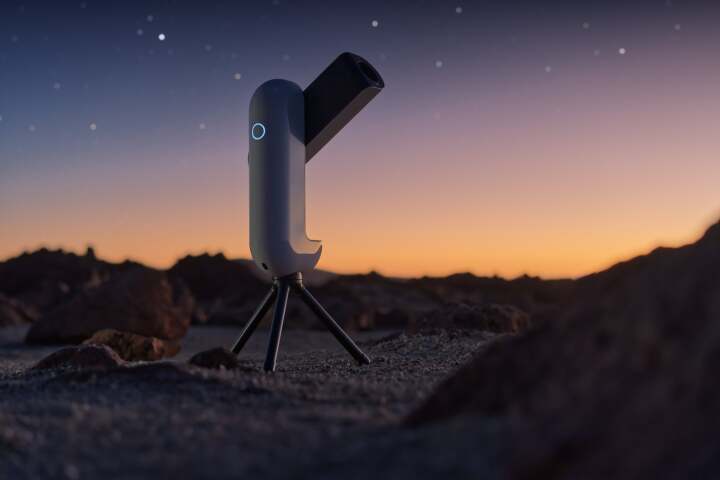 The Spatiotemporal On-Demand Patch (SOP), which would be covered by a protective Band-Aid-like material in real-world use. University of North Carolina –
The Spatiotemporal On-Demand Patch (SOP), which would be covered by a protective Band-Aid-like material in real-world use. University of North Carolina –
Called the Spatiotemporal On-Demand Patch (SOP), the experimental device was created at the University of North Carolina by a team led by professors Wubin Bai and Juan Song. It’s a variation on an existing type of gadget known as a microneedle patch.
Usually, these patches take the form of small polymer sheets with an array of tiny, sharp, medication-loaded studs (aka microneedles) on their underside. When the patch is pressed against the body, the needles painlessly penetrate the top layer of the skin. They then harmlessly dissolve and release their pharmaceutical payload into the body.
The SOC is a bit different, in that it features an electrical circuit on its top surface, its needles can be individually loaded with different medications, and all of the needles are covered in a thin coating of gold. When the patch is initially applied to the skin, that coating keeps the needles from dissolving.
However, when activated by a wireless signal from a nearby smartphone (or computer), the SOC heats one or more of the microneedles, causing the gold on them to disintegrate. The needle itself is then exposed directly to the skin, dissolving and releasing its payload over a period of 30 seconds. As is the case with other microneedle patches, the medication first enters the interstitial fluid between the skin cells, and is then carried into the bloodstream.
In lab tests performed so far, the SOP has been successfully used to administer multiple doses of melatonin to mice. It is hoped that the technology could ultimately be used to treat chronic illnesses such as Alzheimer’s disease, administering different drugs throughout the day following a predetermined schedule.
“The beauty of this device is that it can house dozens, if not hundreds, of concentrated drugs and can program their sequential release automatically,” said Song.
A paper on the research was recently published in the journal Nature Communications.
Source: University of North Carolina
–
[Editor’s Comment: One would assume that protections would be provided to insure “outside influence” did not cause a release of all of the drugs at onetime…]
–























